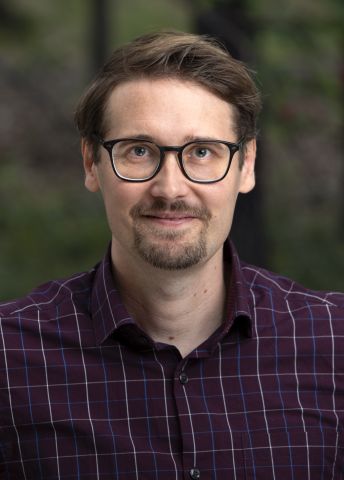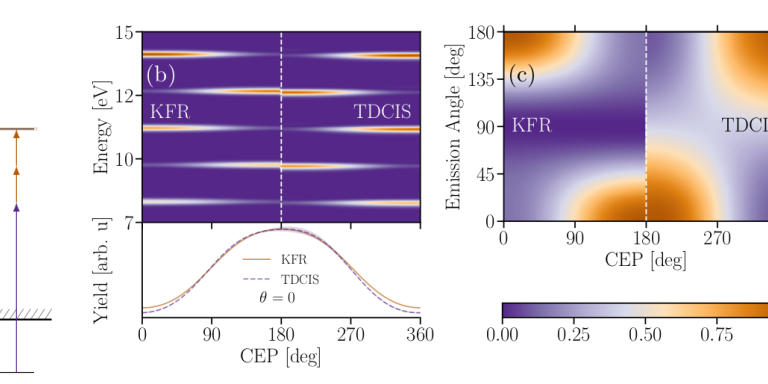
Marcus Dahlström
Associate Professor of Mathematical Physics
Wallenberg Academy Fellow, Prolongation grant 2024
Institution:
Lund University
Research field:
Attosecond physics


Wallenberg Academy Fellow, Prolongation grant 2024
Institution:
Lund University
Research field:
Attosecond physics
Imagine throwing a stone into a pond. One minute the water is still; the next the stone has disappeared and waves are spreading across the surface. Although the impact with the water happened too quickly for us to register the details, the information about where and when it happened remains in the wave pattern.
But for anyone wishing to study even faster and smaller events – like seeing ultrashort light pulses or chemical reactions – waves are not enough. Much faster and smaller waves are needed: electron waves.
Electrons are indeed incredibly fast. Their movements are measured in attoseconds, i.e. one quintillionth of a second, or 10-18 seconds – not much time at all.
“An attosecond bears the same relationship to a second as a second bears to the age of the universe. And we can now measure differences of ten attoseconds between such electron waves – pretty amazing when you look at it like that,” Dahlström says.
Dahlström researches in attosecond physics. Scientists working in this field use ultrashort laser pulses, known as attosecond pulses, to study the movements of electrons.
Electrons are responsible for the chemical bonds between and within molecules. An enticing future application of attosecond physics is therefore to be able to control how electrons move in atoms and molecules, and influence the way chemical reactions take place.
As a specialist in theoretical research, Dahlström performs advanced computations to understand and predict processes.
“My research involves simulating how electrons move in and from atoms when they are subjected to extreme conditions in the form of attosecond pulses and strong laser fields. I want to learn more about how we can control electrons, and also understand how we can use electron movements to measures properties of light.”
Among other things, Dahlström has studied “the photoelectric effect”, by which light shining on a material can dislodge electrons from it.
For many years, scientists did not know whether the electrons are dislodged at once, or whether the process occurs in stages. But Dahlström and his fellow researchers succeeded in demonstrating that it does in fact take a certain amount of time for the atom to emit electrons. They achieved this by comparing the waves from different electrons in a single atom, which led them to discover a relative delay of ten attoseconds.
The study was published in Science in 2017, and was the result of collaboration between theoretical and experimental physicists. These findings provided important answers, but also raised new questions.
Dahlström explains that one problem is that the laser pulse and the electrons interact with each other. It is impossible to know whether a delay is caused by the laser pulse or by the electron movement.
He is therefore developing clocks of a new kind – based on atoms whose electrons are in a “state of superposition”. Superposition is a principle of quantum mechanics whereby a particle can exist in two places, in two states, simultaneously. When the researchers ionize an electron of this kind, i.e. add energy so the electron leaves the atom for a short time, quantum mechanical interference occurs between the two states. This can be used to measure time.
“Our findings suggest that these clocks can be used to measure attosecond pulses even more accurately than before, and say something about their structure in both time and frequency. This is information we need if we really want to exploit the potential of attosecond pulses to control electrons and chemical reactions.”
As a Wallenberg Academy Fellow, Dahlström will be studying what happens when light pulses and laser fields, not just electrons, also acquire quantum mechanical properties.
“It’s a really interesting question. Combining attosecond physics and quantum optics will write a new chapter at the forefront of research into attosecond pulses. This grant will enable me to be in at the beginning.”
He will also study how his atomic clocks affect each other, how long it takes for a group of clocks to decay, and how that process can be controlled.
“I’m entering real terra incognito here – something that may become a completely new, exciting research field. Without this grant, I wouldn’t have been able to take the risk. In practical terms, the funding also means I can recruit another doctoral student and a postdoc.”
Dahlström researches at Lund University, where he also received his undergraduate degree in engineering physics. During his degree course he spent some time at the University of California, Berkeley, where he was able to work as a student researcher during the summer.
“It was the first time I’d done research, and I thought it was really fun. After that I knew for sure that I wanted to do a PhD in physics.
After being awarded his PhD in Lund he worked as a postdoc at Stockholm University, and as a researcher at the Max Planck Institute in Hamburg, Germany. Having worked for a time as a researcher in Stockholm, he returned to Lund University in 2017.
He likes to play the guitar and harmonica, but with two young children, much of his free time is devoted to the family.
“I often talk about atoms with my five-year-old, and I can see she thinks it’s exciting too.”
Text Sara Nilsson
Translation Maxwell Arding
Photo Marcus Dahlström, Markus Marcetic